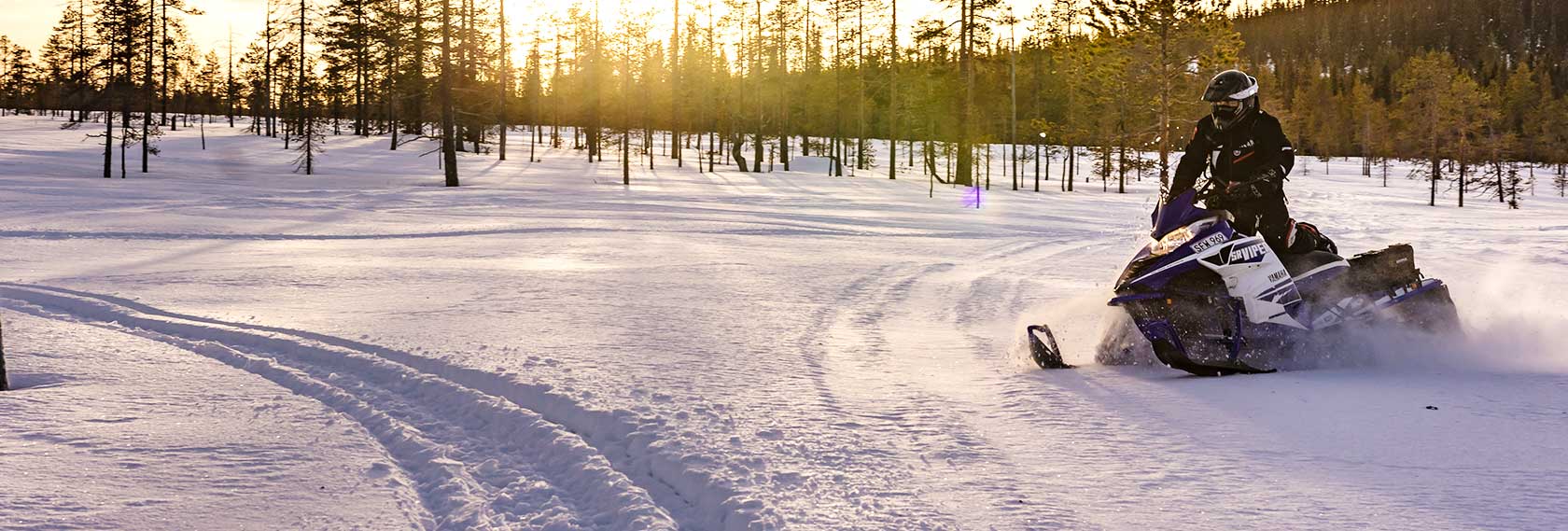

For those of us not lucky enough to be retired and permanently settled in snow country or others that can load their sled in the back of a pickup truck, the rest of us will have to deal with a trailer for transportation of our sleds. Sure it is nice to ride out your back door when there is adequate snow cover, but sooner or later we all hunger to experience what riding is like elsewhere.
How important is a suitable conveyance to us for transport of our beloved sleds? Why can’t I just hook up the old trailer and go? Like everything else in life, trailers come with instructions for proper maintenance and upkeep
For those of you that are considering the purchase of a new trailer, there might be some tips in here that can assist in your decision making process. I can tell you right now that this writers’ personal fav is a covered two place aluminum trailer.
I remember the old days of trailering sleds when my father owned a real up to date unit that articulated 360 degrees where the bed attached to the drawbar. It was a two place steel unit with mesh on the decking! Yikes! Not only did all the salt get all over the underbelly of the sleds by the mesh top, but loading the sleds was a real challenge. The trailer bed could be rotated with the drawbar attached to the vehicle such that you could theoretically load a sled on an angle to the vehicle. When you had the bed tilted down and tried to load a sled on the trailer the whole unit would try and rotate around the drawbar! This made for some very anxious moments and turned out to be something like a dog chasing his tail! This trailer was way ahead of its time. Not! Thank God those days are long gone!
The new trailers are very well built with features that work in high salt environments. An aluminum trailer seems to weather the salt better than steel, but is impractical for very large trailers. When you purchase a new trailer this may be a good time to weather proof all the connections. Take the lenses out and seal up all the wire connections with silicone. Test all connections with the trailer attached to the vehicle. Wiggle those wires – do the lights flash off and on? Better fix it now than to find problems on the road. I cannot begin to stress how important lighting is to a trailer. Your very survival may depend on whether or not these small bulbs work. I like the newer trailer brake lights because they are LED-style. I plan on upgrading mine to that type. They are not cheap, as a set can run you $50-$60 dollars – but what price do you put on your life?
I put on truck-style reflective tape all around the perimeter of the covered top as well. For those of you that do not have a covered top, put as much reflective tape as you can around the whole trailer frame. I made ski guides out of an old truck bed liner and installed them on the decking. This saved a few pounds and dollars to boot, and looks quite nice. Most new trailers have grease fittings on the hubs and this is very important to keep up with. Grease them on a regular basis. I usually perform this task before every trip. Remember to not over-grease these items, as the seals will blow out and cause water to enter. As far as tires go, replace all tires on the trailer every three years. Tires get rotted with UV damage and the salt does not do them any favors either. Most folks store the unit with the tires on the ground and exposed to sunlight. Both these things will rot tires and cause a blowout on the road. Check the sidewalls of each tire-are there cracks? If so, replace them before they sting you out on the road. Check your spare as well, and make sure it has air in it!
As a safety measure I always carry a prop so that I can hold the clamshell top up in case of ice and snow build up on the top. With this kind of weight the top can weigh many pounds and overtake the lifting pistons upward force. When using the trailer be aware of your surroundings. I purchased extension mirrors for the truck that allow me to see much farther out and in back. Units that are large and covered are hard to back up, so have a partner that can help you perform this necessary task. Also, trailers should not be towed over 62 miles an hour. Heat generates very rapidly in rubber over these speeds and can cause a blowout. These small tires rotate very fast and are heavily weighted so beware. Well that’s it for now – happy trails.